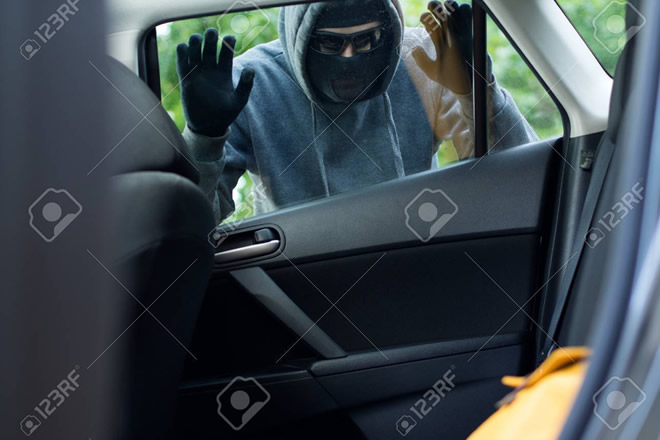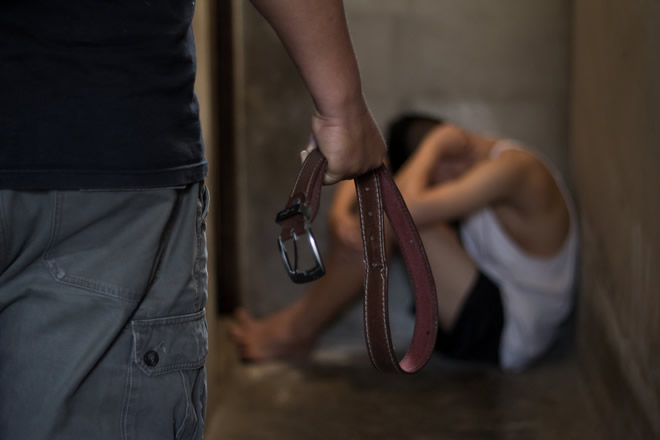
Personal Safety Tips
The following Safety Tips for Personal Security can help you avoid becoming a victim of a crime when you are out and about, or working at your job. By taking a few simple precautions, you can reduce the risk to yourself, and also discourage those who commit crimes. Burglars, robbers, and thieves seek primarily to remove cash or property. Many such intruders are capable of harming people with little provocation, so whether at work, at home, or out on the street, these precautions should be taken.

Safety at Home
Take control of your personal protection and safety with our Safety Tips for Personal Security, an essential component of Self-Defence Training, designed to equip you with practical strategies for staying safe in various environments. Make it a habit to review and practice these tips regularly to strengthen your awareness and preparedness for any potential risks.
- Always leave your headlights on when arriving home after dark until you have unlocked the garage door, or unlocked the front door.
- Have the door key in your hand so you can open the door immediately when you return home.
- When moving into a new apartment or residence, ALWAYS have the locks re-keyed, or changed.
- Know who is at your door before opening it. Wide angle door viewers (180 degrees or 190 degrees) enable you to identify the visitor. You can see the person, that person can’t see you.
- Never rely on chain locks. They are a privacy lock, but not a security lock.
- Never dress in front of windows, always close your drapes.
- Never let anyone into your home without proper identification. Don’t be afraid to ask for identification.
- Always leave outside lights on after dark, or use motion lights.
- If you receive a wrong number phone call, don’t give out your name or phone number.
- If you receive an obscene phone call, hang up.
- In an apartment building, NEVER be alone in the laundry room.
- If you suspect anyone is in your house, do not go in. Go to a neighbour and call the police.
- If you see or hear anything suspicious, call the police
Safety at Work
Take control of your personal protection and safety with our Safety Tips for Personal Security, an essential component of Self-Defence Training, designed to equip you with practical strategies for staying safe in various environments. Make it a habit to review and practice these tips regularly to strengthen your awareness and preparedness for any potential risks.
- Opening the business: Have two employees together meet and unlock the business. One should stay outside, while the other checks the interior. After clearing, both may enter.
- Closing the Business: Employees should accompany each other to their vehicles– especially at night. If this is not possible, perhaps a security guard for the shopping centre can escort the last employee to his/her car.
- Bank Deposits: Making bank deposits alone can be dangerous. Employees making deposits should always go in pairs. If you are alone, vary deposit times and carry the deposit inside a purse or a plain bag. Do not use a bank bag or a bag with a name on it. Never make deposits after closing, as this is an obvious for hold-ups.
- Panic buttons: Install panic buttons at the front counter. Make sure there are phones near both front and rear entrances.
- Controlling Access: This enhances personal security. Keep secondary exits locked. Limit access to secondary exits by non-employees by having doors alarmed and labelled “EMERGENCY EXIT ONLY” or limit access to the area around the door.
- Keep Restrooms Locked: Be in control of access to restrooms, storage areas, etc. This prevents assailants from hiding in waiting and “breakouts.”
- ID Badges for Access Control: They are only as good as the enforcement of the policy.
- Visibility: This increases safety. Keep parking and walking areas well lit, and keep the area around the building clear of debris. Stacks of boxes and pallets can be hiding places for assailants. Install mirrors or Closed Circuit TV in rooms with blind corners and in enclosed parking facilities.
- Keep buildings locked whenever public access is not necessary.
- Watch for suspicious persons (persons not having legitimate business.)
- Look into your car before entering it.
- If you think you are being followed, find other people.
- Use the “buddy” system.
- Take access control policies seriously.
- If Confrontation Does Occur, These are the Safety Procedures to be Kept in Mind:
- Don’t be a hero. Do nothing to risk your personal safety.
- Consider all guns, or threat of guns, as loaded weapons.
- Activate alarms only if you can do so without detection.
- Attempt to alert co-workers only if you can do so safely.
- Follow directions exactly, without volunteering.
- Without seeming obvious, study attacker’s distinguishing features.
Safety while Out
Take control of your personal protection and safety with our Safety Tips for Personal Security, an essential component of Self-Defence Training, designed to equip you with practical strategies for staying safe in various environments. Make it a habit to review and practice these tips regularly to strengthen your awareness and preparedness for any potential risks.
- Try NOT to go out alone at night. Avoid unfamiliar areas, if possible.
- Don’t take shortcuts: don’t walk in or near alleys, and don’t walk on deserted streets.
- Use caution in parking lots, and don’t walk in poorly lighted areas, or dark doorways, or near shrubbery.
- Don’t accept rides from strangers, and don’t respond to comments from strangers on the street.
- Don’t get into an empty elevator with a stranger. If you do ride with another person, stand near the control panel and if attacked, press an many of the control buttons as possible.
- Don’t hitchhike, and if someone suspicious is following you, cross the street and walk into an open business.
- Watch your surroundings and be alert for suspicious persons, especially around banks, stores, street, and your car or home.
- If you are alone at work after business hours, keep the door locked.
- If you work late, ask the security guard or a co-worker to walk you to your car.
- When meeting a new friend, exchange phone numbers only, not addresses. On a first date, let family and friends know where you are going. Consider a daytime meeting rather than a night meeting, for a first date, and meet in a public place.
- It is never a good idea to go to a nightclub alone, and if you do, provide your own transportation.
- Don’t allow alcohol or drugs to impair your judgment. If you haven’t already set a few social standards, do so and stick to them. Don’t allow an overly aggressive pursuer to change your mind.

Safety in your Car
Take control of your personal protection and safety with our Safety Tips for Personal Security, an essential component of Self-Defence Training, designed to equip you with practical strategies for staying safe in various environments. Make it a habit to review and practice these tips regularly to strengthen your awareness and preparedness for any potential risks.
- Never pickup hitchhikers.
- Don’t park in the dark.
- Never leave your keys in the car.
- Never allow another vehicle to follow you home.
- Have your keys in hand so you can open the car door without delay.
- Always keep your car in gear when stopped at a traffic signal or stop sign, so if threatened in any way, you can quickly drive away.
- Always check the back seat of your car before getting in.
- If you stop to aid others, do not get out of the car. Ask what the problem is, and go to the nearest phone and call for assistance.
- Always lock your doors while driving.
- Always prearrange meeting with anyone so you do not have to wait alone.
Safety while riding the Bus
- During off hours, ride as near the operator as possible.
- If someone on the bus bothers you, change seats and tell the operator.
- Have your fare or pass ready in hand when boarding the bus.
- At night avoid dark and isolated intersections or stops.
- Look around when getting off the bus and be aware of people around you.
Safety if you are attacked
Take control of your personal protection and safety with our Safety Tips for Personal Security, an essential component of Self-Defence Training, designed to equip you with practical strategies for staying safe in various environments. Make it a habit to review and practice these tips regularly to strengthen your awareness and preparedness for any potential risks.
- Use common sense. Try to talk your way out of it.
- Try to negotiate.
- Stall for time.
- Be verbally assertive.
- Distract or divert the assailant, then flee. Run toward an open business or a group of people. Hide if you get the opportunity.
- Scream loudly and keep it up to attract attention and help from people near by.
- If the attacker threatens you with a deadly weapon, and you come out of it alive, you took the proper course of action. During an armed attack, you must decide the proper course of action. You must consider your physical capabilities, your location, and your perceived chances of success. If you cannot escape, bide your time and look for another opportunity, a half-hearted attempt could be worse than no attempt at all.
- Notify The Police immediately, when you get the opportunity, and if there are witnesses, ask them to stay until police arrive.
- It is not advisable to carry guns, clubs, knives. It is illegal to carry some of these weapons, and they could be used against you. It is advisable not to carry weapons.
- And finally, if a crime occurs, report it. When you report a crime and all the facts about it, it helps the police to assign officers in the places where crimes are occurring or where they are most likely to occur. If you don’t report a crime, this allows the criminal to operate without interference. Tell The Police what you know. No fact is too trivial.
Purse Protection
Take control of your personal protection and safety with our Safety Tips for Personal Security, an essential component of Self-Defence Training, designed to equip you with practical strategies for staying safe in various environments. Make it a habit to review and practice these tips regularly to strengthen your awareness and preparedness for any potential risks.
- If at all possible, don’t carry a purse.
- When possible, carry your wallet, keys, and other valuables on your person, or in an inside pocket, or other suitable place, rather than your purse. Your purse should be used to carry brushes, combs, make-up, etc.
- Credit cards should be carried instead of cash. Maintain a record of the account numbers at home. Practice carrying only the cards you will be using.
- Carry a shoulder bag securely between your arm and body away from traffic.
- If you are wearing a coat, carry a purse worn over the shoulder, but under the coat.
- Watch your surroundings. Be alert for suspicious persons especially around banks, stores, streets, and your home.
- At night, stay in well-lighted areas and avoid walking close to shrubbery, dark doorways, or other places of concealment.
- Practice the “buddy system”, and shop with a friend when possible. When walking in twos, place your purse between you and your friend.
- Carry a clutch bag un-snapped and upside down between your arm and body with any valuables in the zippered compartment. If someone attempts to steal your purse, loosen your grip, thus allowing the contents to fall to the ground.
- Consider “fanny packs” whenever possible.
- If you are attacked, don’t struggle. Your purse can easily be replaced; you can’t be. If there is a witness, ask that person to stay until police arrive.

Don’t!
Take control of your personal protection and safety with our Safety Tips for Personal Security, an essential component of Self-Defence Training, designed to equip you with practical strategies for staying safe in various environments. Make it a habit to review and practice these tips regularly to strengthen your awareness and preparedness for any potential risks.
- Don’t carry large amounts of money. The first rule is to limit your losses.
- Don’t carry more than you can easily afford to lose. Many purse snatches are committed solely to finance narcotic addictions.
- Don’t carry unnecessary valuables in your purse.
- Don’t let your purse hang loosely in your hand.
- Don’t carry a lethal weapon; it could be used against you.
- Don’t fight. Surrender your purse.
Safety tips for Students
Take control of your personal protection and safety with our Safety Tips for Personal Security, an essential component of Self-Defence Training, designed to equip you with practical strategies for staying safe in various environments. Make it a habit to review and practice these tips regularly to strengthen your awareness and preparedness for any potential risks.
Don’t be a statistic. Staying safe is all about following a few common-sense guidelines.
- Many burglaries happen when a door or window has been left open – in a private home or flat, lock up whenever you go out, with deadbolts if you have them.
- In a hall of residence, be careful who you let in or who follows you into the building – lock your bedroom door even if you are only going down the corridor.
- Robbers are after an easy target – walk in groups at night!
- If possible, use cash-machines during the day – put your card and cash away and be vigilant – never write down your PIN
- Always lock your car and put valuables out of sight – never leave the keys in the ignition even when paying for petrol
- After a night out, arrange to go home with friends or stay over at your friends.
- To prevent spiking, don’t leave drinks unattended.
- Be vigilant when using your mobile phone – if your phone is stolen, call your network to immobilise it.
- Protect yourself with insurance – keep lists of the make, model and serial numbers of your electronic items to help police track them down if they are stolen.
- Mark your property with the initials of your university and your student ID number – this makes it harder for a burglar to sell stolen goods and can help the police to return items to you.
Safety tips at Cashpoints
Take control of your personal protection and safety with our Safety Tips for Personal Security, an essential component of Self-Defence Training, designed to equip you with practical strategies for staying safe in various environments. Make it a habit to review and practice these tips regularly to strengthen your awareness and preparedness for any potential risks.
- Never divulge your personal identification number (PIN) to anyone.
- Be quick and do not hang around the cashpoint when you have completed your transactions.
- Try not to use a cashpoint late at night or in a deserted street.
- Abort if you become suspicious of anyone watching you or behaving suspiciously.
- Never count your money on the street, put it away as soon as possible.
- Do not write your PIN down even if it is disguised or in code.

Safety tips for Women
Take control of your personal protection and safety with our Safety Tips for Personal Security, an essential component of Self-Defence Training, designed to equip you with practical strategies for staying safe in various environments. Make it a habit to review and practice these tips regularly to strengthen your awareness and preparedness for any potential risks.
- Always be aware of your surroundings – This applies whether you are traveling alone or in groups. Do not just focus inwardly on your thoughts if you are alone, or your friends if you are together. Keep one eye out for your environment, looking out for suspicious characters, possible danger, etc. Also, do not assume that because your area has been “safe” thus far, that it will continue to be so.
- Travel in groups – “There is safety in numbers” is not just a cliché. Its true. Make a point of traveling together with others, whether its on public transportation, on campus, in cars, etc.
- Change the route you normally travel by – If you have taken the same bus, train or highway to get to work or school, change your route. Even if it takes you a little longer, your safety is more important. By changing your route, you can avert possible attacks or harassment from those who know your schedule, method and route of travel well. Please note though that you should avoid short cuts that take you through unfamiliar or unsafe areas.
- Look confident – Walk with a straight posture and your arms swinging by your sides. Avoid slouching or walking like a victim. This makes you an easy target for attackers.
- When riding by public transportation choose the right seat – If you are riding by bus or train, do not sit on the window seat as you may be “blocked in” by a potential assailant. Always select the seat next to the aisle so that you can quickly leave if necessary.
- If you are driving alone – Don’t think that if you are in a car, you are safe. Windows should be up and doors locked even when driving to avoid unwanted passengers at intersections. When you are walking to your car, always have your keys ready, so that you can quickly get into your car.
- When you get to your car – Do not just get in right away. Always check your car before entering, especially the back, for any intruders.
- Never leave your car door unlocked – Even if it means for one minute to drop something off in the mailbox that’s a few feet away. Attackers have been known to lie in wait for such an opportunity.
- Be careful in parking lots – Always be alert in parking lots, especially when it’s dark. Ask someone to escort you to your car. Between cars and inside cars, it’s easy for someone to hide and wait until an un-alert person comes along.
- Do not use the MP3 – If you are used to listening to your Mp3 while outside, drop this habit, especially in isolated areas. With your MP3 on, you cannot hear the approach of a possible attacker.
- Note “safe houses” along your route – Mentally note locations at intervals on each route you take that can be used as “safe houses” if you are attacked, such as shops or houses that you know to be occupied by a friend or acquaintance.
- Do not open the door of your home without checking – DO NOT open the door to your home without first checking from a window, peephole or by asking and verifying who it is. Instruct children to do the same.
- Report any suspicious activity around your home – If you see people loitering on the streets near your house, call the police on an emergency number and report it immediately without thinking too much.
- Stay off the phone – Walking around with a phone clamped to your ear is dangerous as you will stop monitoring your environment effectively. Make your call from somewhere safe whilst stationary.
Safety tips for Men
Take control of your personal protection and safety with our Safety Tips for Personal Security, an essential component of Self-Defence Training, designed to equip you with practical strategies for staying safe in various environments. Make it a habit to review and practice these tips regularly to strengthen your awareness and preparedness for any potential risks.
Personal safety is not just a women’s issue, it affects men as well!
FACT: Men are twice as likely to be the victim of a violent attack as women.
- Don’t be flash with your cash or mobile phones, keep their use discreet and put them away after use. Don’t carry them in an obvious manner. Try not to carry your wallet in your back trouser pocket where it is vulnerable and in clear view.
- Walk purposefully and appear confident without being aggressive.
- Avoid wearing headphones or chatting on your mobile when walking down the street alone, this will prevent you from hearing any danger warning signals.
- Be wary of casual requests from strangers, like someone asking for a cigarette or change – keep them politely at a distance.
- Carry a small tazer/stun-gun they are not just for women these can be used to shock and disorientate an attacker gaining vital seconds for you to get away.
- If you hear or see trouble ahead, then cut off or turn around before you get to it and head to the nearest safe place, such as a garage, police station or anywhere where there will be lots of people.
- Remember, alcohol severely affects your ability to make safe judgements. The majority of violent attacks on young men take place in or around licensed premises. Think about how much you drink and the type of places you go drinking.
- If you are trapped in an aggressive situation, then try and stay calm and talk your way out of it. Physical self-defence should only be a last resort. It limits your options and commits you to a fight you could lose. It is not weak to walk away from violence.
- Avoid an aggressive stance: crossed arms, hands on hips or a raised arm is challenging and confrontational. Avoid looking down on anyone or touching someone unnecessarily.
- Avoid using unlit or isolated cash machines especially if you feel you are being observed.
- Keep fit. Good posture, stamina, strength and tension control can all aid personal safety.
- Be aware how you come across when you’ve been drinking. Ask your mates. Sometimes people can inadvertently attract trouble by the way they behave when they are drunk.
- If you have a friend whose behaviour or attitude (drunk or sober) attracts trouble, pick a good time and have a word with them. Make it clear that you are not going to be dragged into violence because of their stupidity.
- Steer clear of trouble – if you see any trouble or suspect that it might be about to start – keep clear. The best thing you can do is to alert the police and keep away.
- If someone is becoming agitated or aggressive, don’t crowd them. Invading someone’s personal space will only make them more uptight and defensive and therefore more likely to become violent.
- If you see someone else being attacked, it is not always the best idea to rush over to help as this could escalate the problem and you too could end up being attacked. It may be better to stand back at a safe distance and call loudly for help and use your mobile to phone the police. Seeing what you are doing should stop the attacker, whilst leaving you safe.
- Report any incident as soon as possible. You may save someone else.
- If safe to do so record the incident on your mobile phone.
